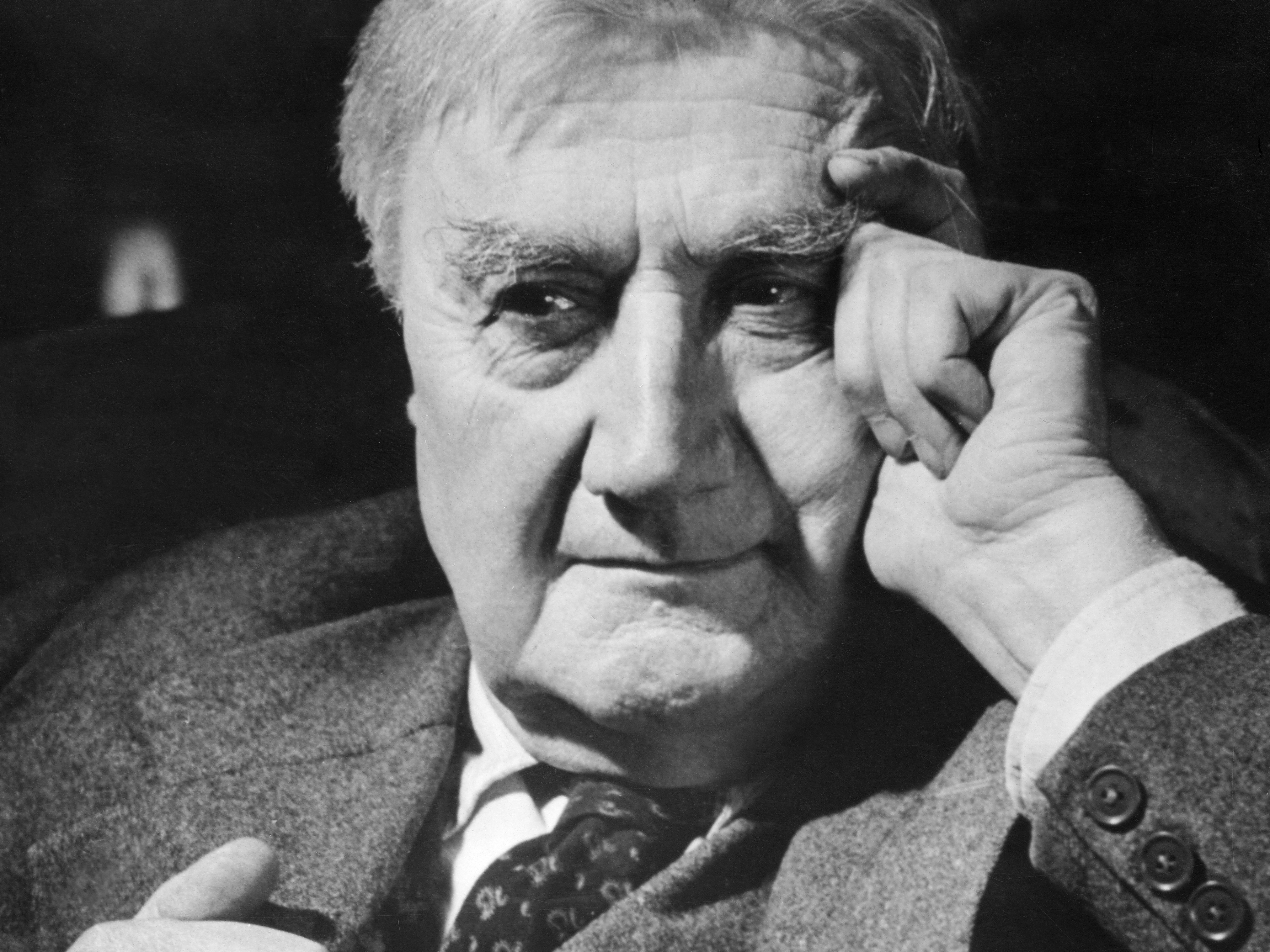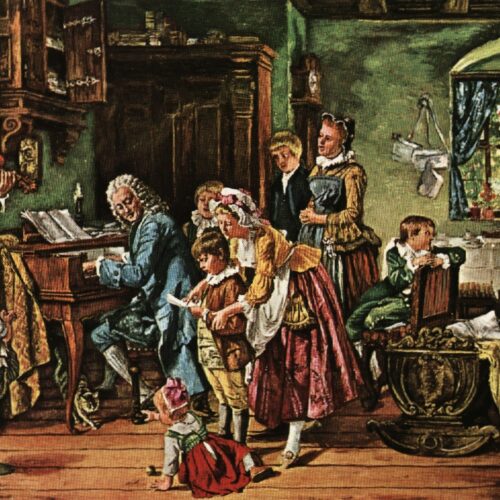
Celebrating the 150th birthday of British composer Ralph Vaughan Williams
Today marks the 150th birthday of one of England’s most revered composers, Ralph Vaughan Williams, who is also widely beloved beyond Britain. A folksong expert who logged long trips collecting traditional tunes all over the British Isles, Vaughan Williams famously produced gently modal folksong fantasies evoking England’s “green and pleasant land.” He also became a go-to composer for major occasions of church and state, called on to reflect and amplify national feeling.
This year, his sesquicentennial, celebrations of the English master have been surprisingly muted, even in his homeland – a boost in Vaughan Williams programming last summer at the BBC’s Promenade concerts was the rare exception. Has his star dimmed in the six decades since his death? In our brash, ironic age, a composer who penned seemingly endless pages of pastoralia – well crafted, sincere in feeling, but perhaps meaningful mostly to confirmed Anglophiles – may seem pleasantly irrelevant and quaint. Especially in a year like this one.
For everyone, 2022 has been difficult. Uncertainties abound, and Britain has been hit especially hard. The cost of living has surged, while the value of the pound has plummeted. The COVID pandemic stubbornly persists; war in Europe seems uncomfortably near. Political life in the post-Brexit climate is polarized and unpleasant – and the one unifying figure tying British citizens to one another and to their shared past has gone to greater glory after 70 years on the throne. The death of Queen Elizabeth II on Sept. 8 seemed the last straw to many.
But such challenges provide precisely the occasion to revisit the quintessentially British Vaughan Williams. We tend to view him through a gentle haze of nostalgia, forgetting that he lived through profoundly turbulent times, responding with music of impressive range and complexity. He endured two world wars, an unprecedented royal abdication, the decline of the Empire and the rise of the Cold War. The music of Vaughan Williams can speak profoundly to the unrest of the present age, not only in Great Britain but well beyond its borders.
His sesquicentennial offers the perfect opportunity to get reacquainted with an underestimated master. Below, I offer some suggestions to begin a “revisiting Vaughan Williams” journey. (If your favorites aren’t here, be assured that this list isn’t exhaustive. And if you encounter some music you never knew before, so much the better!)
Songs of Travel (1901-1904)
The opening bars of this song cycle set the inexorable pace of a wanderer’s trek; you can easily imagine a young Vaughan Williams tramping through the countryside in search of traditional tunes and, in fact, these songs coincide with his first forays into folksong collection. But these sensitive settings of Robert Louis Stevenson poems clearly descend from 19th-century European traditions instilled in the composer by two titans of British music, Hubert Parry and Charles Villiers Stanford.
Aristophanic Suite (Overture and Incidental Music for The Wasps, 1909)
Though this witty music sounds unmistakably English, it also reflects the composer’s three months of intensive study with Maurice Ravel, who commented that among all his pupils, only Vaughan Williams never mimicked his teacher. Vaughan Williams the “pupil” was already an experienced composer when he sought out Ravel, and retained his highly individual voice while absorbing a greater transparency and mastery of instrumental color that would grace every orchestral work that followed.
Fantasia on a Theme by Thomas Tallis (1910, revised 1919)
Vaughan Williams edited The English Hymnal in the first decade of the 20th century, restoring many traditional hymn tunes and chorales to their original shape and planting multiple English folk tunes in its pages. This beloved fantasia draws on a somber, poignant 16th-century psalm setting. The inventive scoring for string quartet and two orchestras, one large and one small, allowed Vaughan Williams to build great swells of sound, evoking Gothic architecture.
Mass in G minor (1922)
The Great War silenced Vaughan Williams. Already in mature middle age, he served as an ambulance driver and was deeply affected by the battlefield scenes he witnessed and the deaths of several friends. He also suffered permanent damage to his hearing. Only in the ’20s did he begin to compose again, and one of his first works of substance was this Mass evoking Renaissance models, which choral enthusiasts rank alongside the finest sacred music of his Tudor-era predecessors, Thomas Tallis and William Byrd.
Symphony No. 4 (1935)
https://youtu.be/CSXdfdy1HAo
This austere, uncompromising opus surprised and shocked audiences and critics when it appeared during a period of increasing tension across Europe, but Vaughan Williams’ peers, notably William Walton and Malcolm Arnold, immediately discerned its worth. There is no sentiment here, no nostalgia – which is not to say it lacks deep feeling. Its sober, muscular counterpoint perfectly captured the anxious uncertainty of prewar Britain.
Oboe Concerto (1944)
This quirky charmer dates from the closing years of World War II and, below its genial surface, holds a lingering sense of unrest mixed with humor and hope. Well into his 70s, Vaughan Williams was still exploring new formal and harmonic possibilities. This concerto’s structure is unorthodox: A leisurely opening pastorale, laced with solo cadenzas, leads to a brief dance interlude, followed by a virtuosic final scherzo. There is no central slow movement, and almost no rest for the oboist, either.
Three Shakespeare Songs (1951)
A trio of magical, incantatory poems from The Tempest and A Midsummer Night’s Dream prompted these fantastical, impressionistic miniatures. Their mercurial harmonic shifts and verbal effects require flawless tuning and diction from the singers to achieve their full effect.
Old 100th Psalm Tune (1953)
Vaughan Williams’ ease in merging musical, religious, and patriotic references from multiple eras made him a perfect composer for stately occasions such as the coronation of Queen Elizabeth II. This hymn, by 16th-century French Calvinist Louis Bourgeois, is associated in England with a metrical version of Psalm 100 (“All People That on Earth Do Dwell”), and one verse of Vaughan Williams’ majestic arrangement is a fauxbourdon, attributed to the Renaissance composer John Dowland – a respectful and pertinent nod to the first Elizabethan age..
9(MDAyOTk4OTc0MDEyNzcxNDIzMTZjM2E3Zg004))
Related Stories:

Dedicate Classical Music To A Special Someone This Valentine’s Day
Music can express and inspire so many emotions. That makes it a perfect way–a “heartfelt” way–for you to show your love and appreciation to someone who plays an important role in your life.

Vote For Your Favorite Music In NWPB’s Classical Countdown
What is your favorite symphonic movie score? Your favorite aria or overture? Whether it’s a well-known composition by Bach or Beethoven, or a hidden gem by a lesser-known composer, NWPB wants to know what pieces resonate with you.

Women’s History Music Moment: Bach’s Daughters
You’ve heard so much about the sons of Johann Sebastian Bach, but there were daughters, too.
Bach was 23, and his wife Maria Barbara was 24, when the first of their children was born. They named her Catherina Dorothea. CD grew into a singer, and helped out in her father’s music work. Fifteen years passed, her mother died, her father remarried, and finally, CD Bach acquired a sister: Cristina Sophia Henrietta, daughter of Johann Sebastian and Anna Magdalena Bach. CSH died at the age of three, just as another sister, Elizabeth Juliana Frederica, was born. EJF Bach would grow up to marry one of her father’s students.















